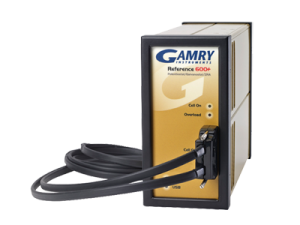A new research article entitled “Impact of particle shape on electron transport and lifetime in zinc oxide nanorod-based dye-sensitized solar cells” has recently been published at AIMS Press Materials Science. The article was written by Roger Chang, Kemakorn Ithisuphalap, Ilona Kretzschmar – Department of Chemical Engineering, City College of the City University of New York, New York, NY 10031, USA.


IMPS/IMVS data was obtained by synchronizing two Gamry Reference 600 potentiostats.
The abstract is below, and the complete article is available at AIMS Press where you can also download a PDF version.
Absract
Owing to its high electron mobility, zinc oxide represents a promising alternative to titanium dioxide as the working electrode material in dye-sensitized solar cells (DSCs). When zinc oxide is grown into 1-D nanowire arrays and incorporated into the working electrode of DSCs, enhanced electron dynamics and even a decoupling of electron transport (τd) and electron lifetime (τn) have been observed. In this work, DSCs with working electrodes composed of solution-grown, unarrayed ZnO nanorods are investigated. In order to determine whether such devices give rise to similar decoupling, intensity modulated photocurrent and photovoltage spectroscopies are used to measure τd and τn, while varying the illumination intensity. In addition, ZnO nanorod-based DSCs are compared with ZnO nanoparticle-based DSCs and nanomaterial shape is shown to affect electron dynamics. Nanorod-based DSCs exhibit shorter electron transport times, longer electron lifetimes, and a higher τn/τd ratio than nanoparticle-based DSCs.
